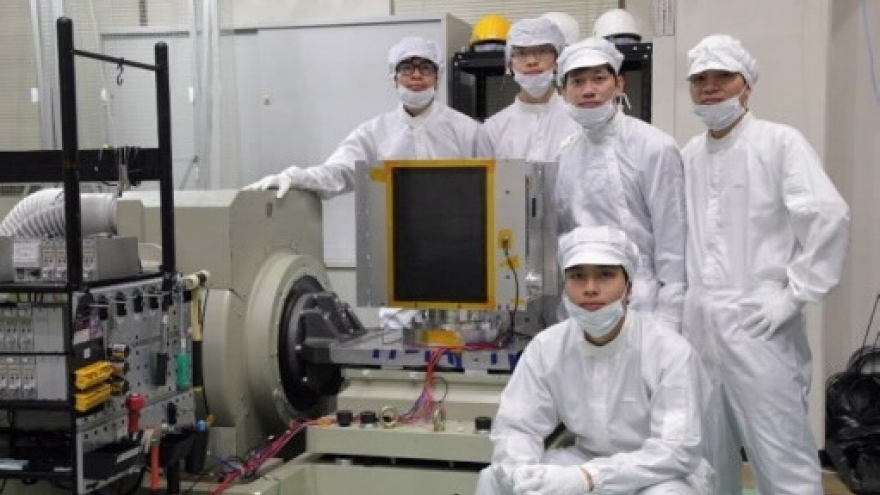Vietnam’s coast observation satellite all set to go into space
MicroDragon, a Vietnamese-made satellite to be used for observing the nation’s long coast, will be launched on January 17.
 |
|
MicroDragon measures 50x50x50 centimeters (19.6 inches) and weighs around 50 kilograms (110 pounds). It will be used to observe Vietnam’s coast to evaluate water quality, locate fisheries resources and monitor the changes in phenomena to serve aquaculture. |
 |
| It will also detect cloud coverage and aerosol features, supporting atmospheric correction, collect ground-based sensor signals and transfer this data back to stations on Earth. Engineers have just finished the final vibration testing before the satellite’s launch this week. |
 |
|
In 2013 Vietnam National Space Center (VNSC) sent 36 engineers to five top universities in Japan for master’s programs in satellite technology as part of a joint Vietnam-Japan project to prevent natural disasters and climate change using Earth observation satellites. With official development assistance from Japan and counter capital from the Vietnamese government, the team from VNSC has worked with Japanese experts to build MicroDragon in Japan. |
 |
|
The satellite marks a milestone for Vietnam in the process of building satellites. The VNSC told the media earlier that the satellite is expected to provide imagery of a specific area within 6-12 hours compared with at least two days when is it obtained from a commercial satellite imagery provider. An engineer at the VNSC. The Japan Aerospace Exploration Agency recently said MicroDragon would be launched from Japan on January 17. |
 |
|
Vietnam sent its first satellite into space in August 2013. The one-kilogram PicoDragon was in space for three months. The country had launched four satellites before that, but they had been manufactured by foreign companies. |
 |
| Vietnam plans to make the LOTUSat-2 satellite (500 kg) by 2022, which would place it among the leading countries in the region in terms of space technology, alongside Indonesia and Malaysia, Pham Anh Tuan, general director of the VNSC, said. |

